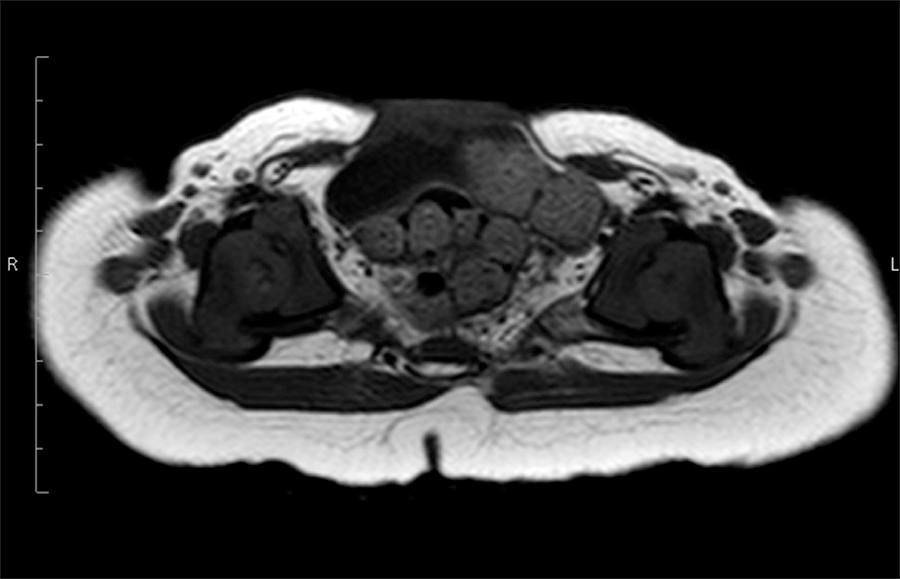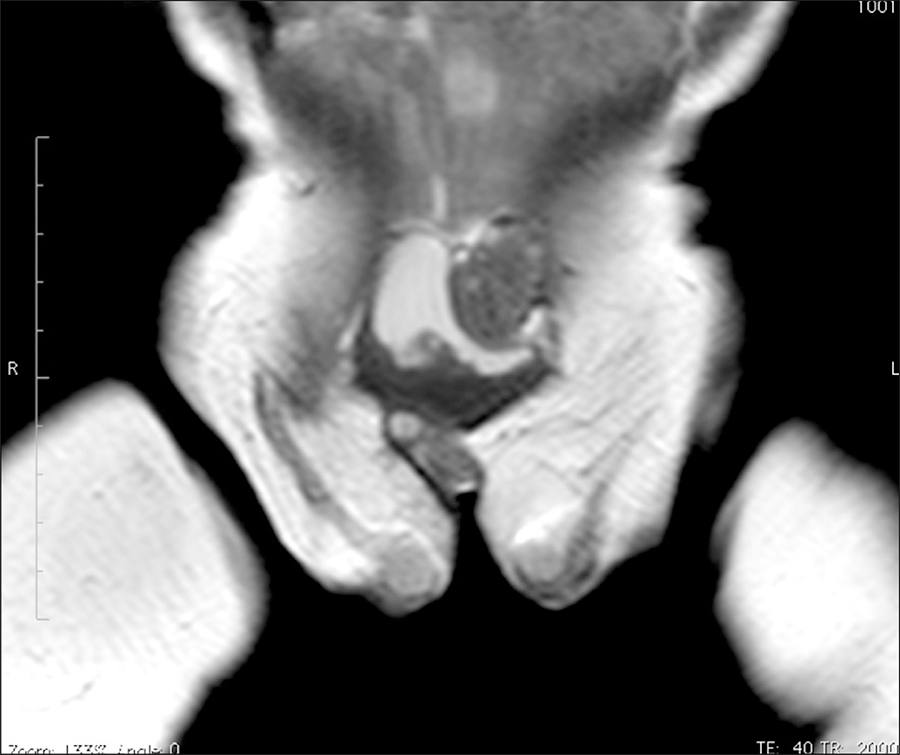SUMMARY
Bladder exstrophy is a rare congenital anomaly resulting from failure of fusion of the middle of the pelvis line tissues during embryogenesis. It is characterized by malformation of the lower abdominal wall involving the genitourinary tract and the musculoskeletal system. Its incidence is estimated at 1:30,000 to 1:50,000 live births, and it is 2 or 3 times more frequent in males. The child’s age is important and the best results are obtained when treatment is performed shortly after birth.
Keyword
bladder exstrophy
RESUMO
A extrofia de bexiga é uma anomalia congênita rara decorrente de falha da fusão dos tecidos da linha média da pelve durante a embriogênese e caracteriza-se por má-formação da região inferior da parede abdominal, envolvendo o trato geniturinário e o sistema musculoesquelético. Apresenta incidência estimada de 1:30.000 a 1:50.000 nascidos vivos, sendo 2 a 3 vezes mais frequente no sexo masculino. A idade da criança é importante e os melhores resultados são obtidos quando o tratamento é realizado logo após o nascimento.
Palavra-chave
extrofia vesical
CASE
Male patient, aged eight months, referred with clinical diagnosis of bladder exstrophy for assessment of any associated anorectal and skeletal anomalies. According to the caregiver, this was a term birth with prenatal examinations performed uneventfully, and diagnosis made based on morphological routine ultrasound (US) during pregnancy.
DISCUSSION
Bladder exstrophy is a rare congenital anomaly resulting from failure of fusion of the middle of the pelvis line tissues during embryogenesis. It is characterized by malformation of the lower abdominal wall involving the genitourinary tract and the musculoskeletal system.
Its incidence is estimated at 1:30,000 to 1:50,000 live births, and it is two or three times more frequent in males. In the classic bladder exstrophy, the anterior wall of the back of the bladder is exposed, and changes such as epispadias, dysplasia of the pelvic floor muscles, short penis or clitoris bifurcated are part of the clinical picture.
The child’s age is important and the best results are obtained when treatment is performed shortly after birth. Most pathological changes can be prevented by early closure of bladder exstrophy.
Pubic diastasis (Figures 1 and 2) is the stigma of exstrophy-epispadias complex malformations; it is narrower in epispadias and wider in the bladder and cloacal exstrophy and is always associated with lateral rotation of the femur and acetabulum. The defect of the abdominal wall that remains after closure of the bladder is triangular, and is limited laterally by the rectus abdominis muscle and inferiorly by the inter-symphyseal band, where the external urethral sphincter is inserted. The perineal floor is compromised by the malformation, which explains the recurring rectal prolapse. The anus is more anterior compared to its original position in both sexes.
Axial T1 magnetic resonance imaging (MRI). Diastasis of pubic bones associated with a defect of the anterior abdominal wall and insinuation of the anterior wall into the ventral muscles.
Axial T1 MRI. Insinuation of the anterior wall of the bladder and bowel loops through lateral opening in the rectus abdominis muscle.
Boys present epispadias, short phallus, wide at its base and with upward (dorsal) curvature. The urethra is represented by exposed dorsal mucosa. Penis size is variable, but is often small, imposing serious difficulties in obtaining adequate phallus even after reconstruction. The scrotum is split and the testicles are usually palpable (Figure 3). Cryptorchidism is rarely associated anomaly, and most commonly the testicles are located in the external inguinal ring and can be descended into the testicular pouch. Inguinal hernia, probably related to the fragility of the side of the abdomen, is common.
Coronal T2 MRI. Ectopic testes located in subcutaneous tissue, anterior surface of the thighs.
Typically, girls have bifid clitoris; the internal genitalia is normal, and vaginal and uterine abnormalities may occur. The urethra is also epispadic and extremely short.
Differential diagnosis includes diseases that occur with defect of the anterior abdominal wall, such as omphalocele, gastroschisis and cloacal exstrophy.
REFERENCES
-
1Beaty JH. Congenital and developmental anomalies of hip and pelvis In: Canale TS. Campbell’s operative orthopaedics. 10.ed. St. Louis: Mosby, 2003. p.1118-9.
-
2Ramírez E, Calderón M. Osteotomía ilíaca en extrofia vesical. Rev Mex Ortop Traumatol. 1997; 11(5):293-6.
-
3Segev E, Ezra E, Binyamini Y, Wientroub S, Ben-Chaim J. A combined vertical and horizontal pelvic osteotomy approach for repair of bladder exstrophy: the Dana experience. Isr Med Assoc J. 2004; 6(12):749-52.
-
4Frey P. Bilateral anterior pubic osteotomy in bladder exstrophy closure. J Urol. 1996; 156(2 Pt 2):812-5.
-
5Satsuma S, Kobayashi D, Yoshiya S, Kurosaka M. Comparison of posterior and anterior pelvic osteotomy for bladder exstrophy complex. J Pediatr Orthop B. 2006; 15(2):141-6.
-
6Martín C, Darnell A, Durán C, Bermúdez P, Mellado F, Rigol S. Magnetic resonance imaging of the intrauterine fetal genitourinary tract: normal anatomy and pathology. Abdom Imaging. 2004; 29(3):286-302.
Publication Dates
-
Publication in this collection
May 2016
History
-
Received
06 Apr 2015 -
Accepted
04 May 2015




